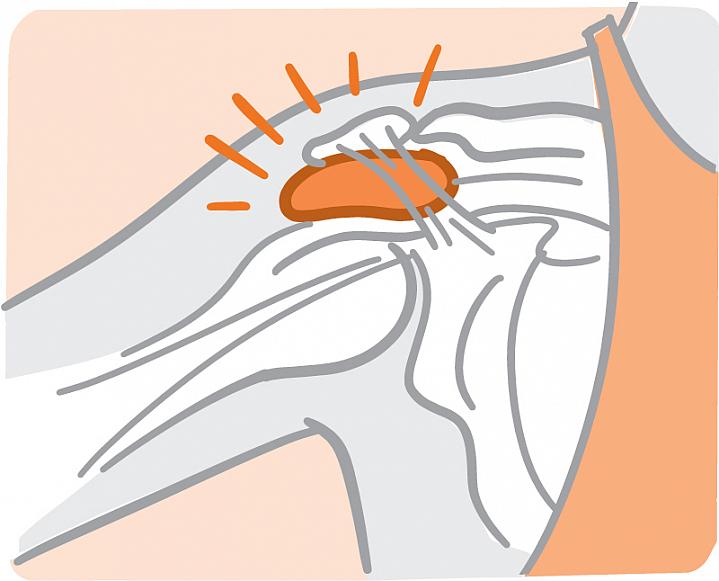Beating Bursitis
Take Care of Your Joint Cushions

Almost everyone has joint pain at some point in life. It can flair up suddenly. Or it can start off mild and get worse over time.
A common cause of joint pain is bursitis. Bursitis happens when a bursa in a joint becomes inflamed. (When you see “itis” at the end of a medical word, it means inflammationHeat, swelling, and redness caused by the body’s protective response to injury or infection..)
A bursa is a small, fluid-filled sac that acts as a cushion between bones and other moving parts, such as muscles, tendons, or skin. You have about 150 bursas in your body. They keep joints such as your shoulders, knees, and elbows working smoothly. But they can be hurt by sudden or repetitive forces.
Bursitis often flairs up because of another injury, explains Dr. Jeffrey Katz, a joint specialist at Brigham and Women’s Hospital and Harvard University. When an injury causes someone to move their joint differently than normal, it can irritate a bursa.
“For example, if you have a foot injury, it can change the way you walk. Maybe you don’t even notice it, but you limp a little,” Katz says. “And that changes the way that forces from muscles and tendons pull on the bones. That subtle change can give rise to some inflammation in the bursa.”
Bursitis can also be caused by putting pressure on a joint for too long, such as kneeling or leaning on your elbows. Activities that require repetitive motions or place stress on your joints—such as carpentry, gardening, playing a musical instrument, or playing a sport—can sometimes trigger bursitis. Rarely, a bursa may become inflamed due to an infection.
It can sometimes be hard to tell whether joint pain is caused by inflammation in a bursa, tendon, or muscle, Katz says. Lab tests and imaging often can’t help pinpoint the source of the pain. Your doctor will likely do a physical exam and ask questions about your activities and recent injuries.
Fortunately, treatment for most simple cases of joint pain is similar no matter what’s causing it, Katz adds. This may include rest, over-the-counter drugs that suppress inflammation, and gentle stretching and strengthening exercises.
Physical therapy may help if bursitis has reduced your ability to move your joint or if it results in muscle weakness. If your bursitis is due to an infection, your doctor may prescribe antibiotics.
Bursitis and other causes of joint pain can be prevented by paying attention to how you move and perform daily activities. See the Wise Choices box for tips on preventing bursitis.
Bursitis is more likely to occur the older you get. To help prevent bursitis as you age, try to stay as active as possible, Katz says. “The best way to stay out of trouble with these joint injuries is to try to stay flexible and strong,” he concludes.
NIH Office of Communications and Public Liaison
Building 31, Room 5B52
Bethesda, MD 20892-2094
nihnewsinhealth@od.nih.gov
Tel: 301-451-8224
Editor: Harrison Wein, Ph.D.
Managing Editor: Tianna Hicklin, Ph.D.
Illustrator: Alan Defibaugh
Attention Editors: Reprint our articles and illustrations in your own publication. Our material is not copyrighted. Please acknowledge NIH News in Health as the source and send us a copy.
For more consumer health news and information, visit health.nih.gov.
For wellness toolkits, visit www.nih.gov/wellnesstoolkits.



